Tuma: Preparing for "The Bullpen" on Underdog Fantasy
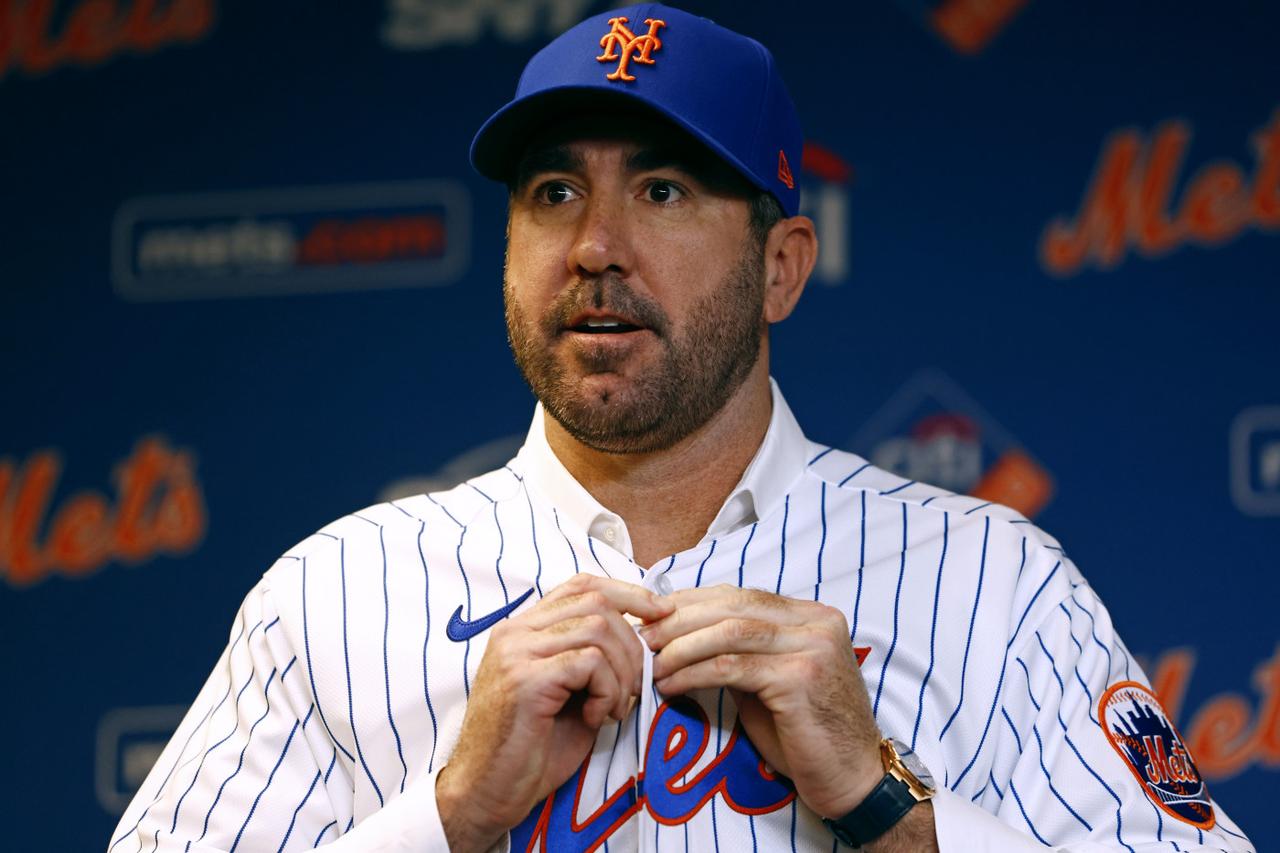
With the Winter Meetings back for the first time since 2019, the "Hot Stove" lived up to its billing this offseason. We saw multiple 11-year deals be signed. There was a 13-year contract that led to a team backing out, only for another team to offer the same player a 12-year deal, but now that agreement might be in jeopardy.
When all was said and done this month we saw Jacob deGrom, Trea Turner, Xander Bogaerts, Carlos Rodon, Carlos Correa, Dansby Swanson, Willson Contreras, and Justin Verlander change teams. Aaron Judge received $360 million. Edwin Diaz got over $100 million. Kodai Senga and Masataka Yoshida arrived from Japan. Teoscar Hernandez, Sean Murphy, and Daulton Varsho were traded.
That is the type of offseason its been. And while there will still be some movement before Opening Day, it's time to start investing in your 2023 convictions.
Enter "The Bullpen", Underdog Fantasy's $5 MLB best ball contest that you can start drafting right now!
This article was written to help you sort through it all and provide a starting point to start drafting. There will be more revelations about the optimal strategy as the winter moves along. That means there's a possible edge to be had by drafting now.
Be sure to reach out on Twitter anytime, @toomuchtuma.
The Format
If you're interested in reading the contest breakdown written by the Underdog overlords, you can find all the info by clicking here. Otherwise, I'll be doing my best to summarize it for you.
Essentially, you start your league in a 12-person draft.
The Tournament will have 4 Rounds. At the end of Round 1, the top 3 performing entries will advance to Round 2 and receive at the least the minimum prize (described below).
At the end of Round 2, the top 2 performing entries from your new, 12-person group will advance to Round 3.
At the end of Round 3, the top performing entry from your new, 6-person group will advance to Round 4.
At the end of Round 4, the top 79 prizes will be given out.
Rounds (exact weeks/rounds shown in "The Schedule" below)
Round 1 – MLB Best Ball Weeks 1-18
Round 2 – MLB Best Ball Weeks 19-20
Round 3 – MLB Best Ball Weeks 21-22
Round 4 – MLB Best Ball Weeks 23-24
The prize breakdown is as follows:
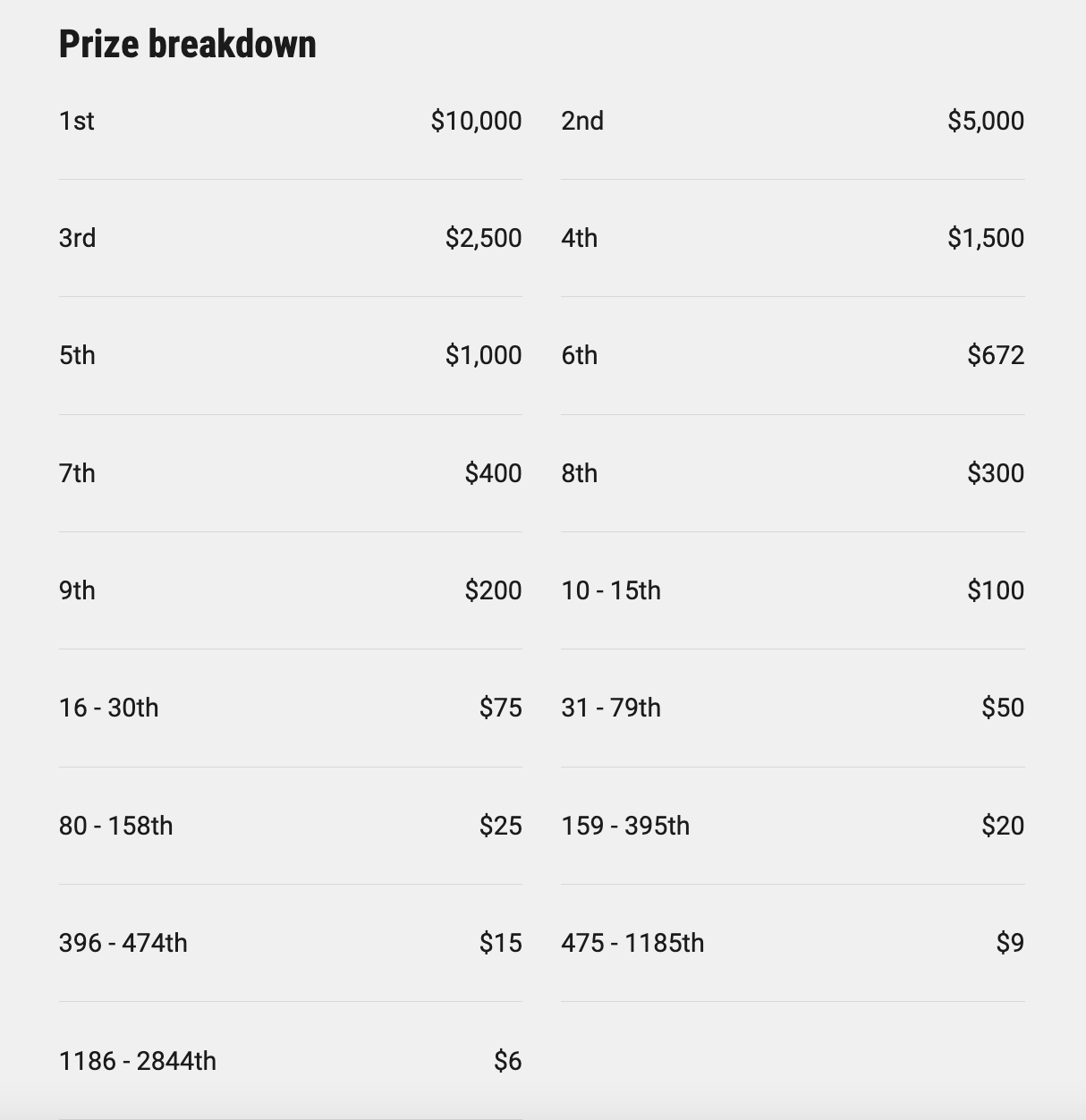
The Schedule
Note the final week of the regular season won't be used for Underdog Best Ball contests. Also note Weeks 1 and 15 are a few days longer due to the timing of Opening Day and the All-Star break.
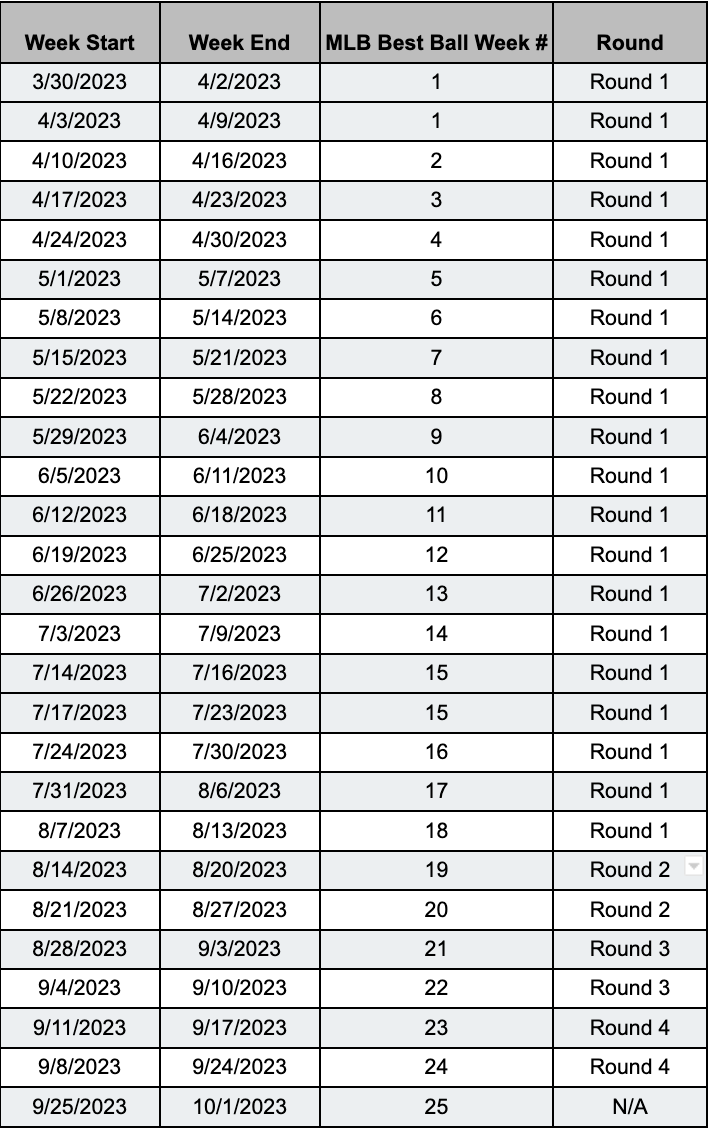
The Scoring
Here is the scoring system for pitchers in Underdog MLB Best Ball tournaments.
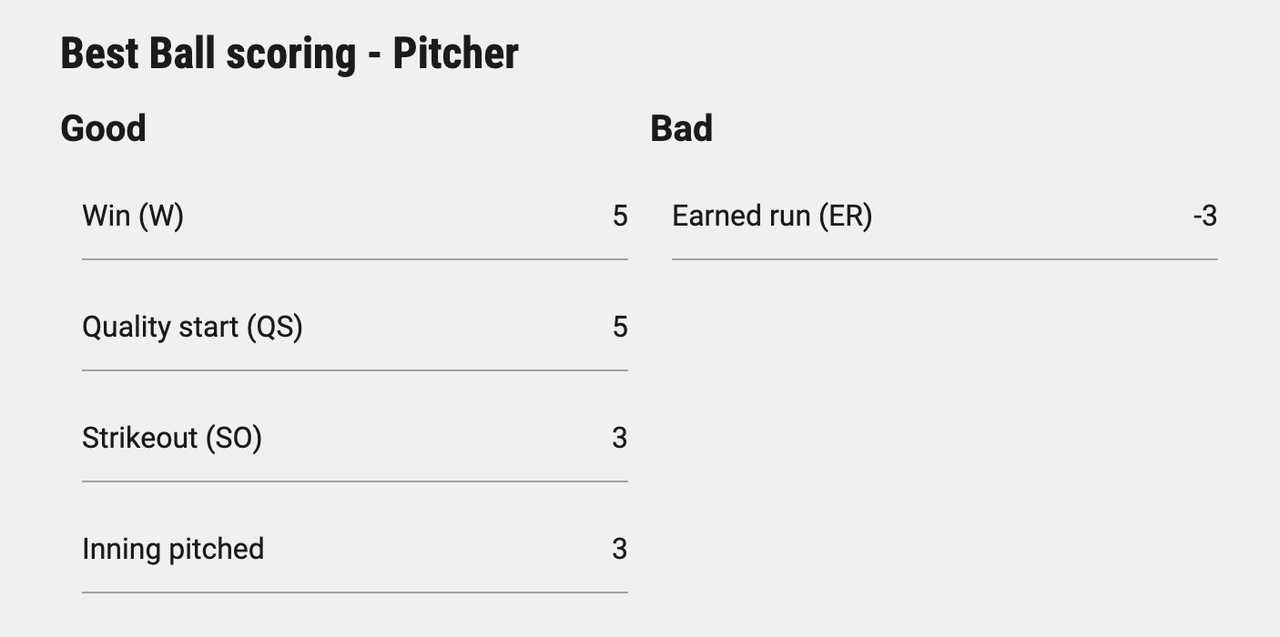
And here it is for hitters. Note that only pitchers can lose points!
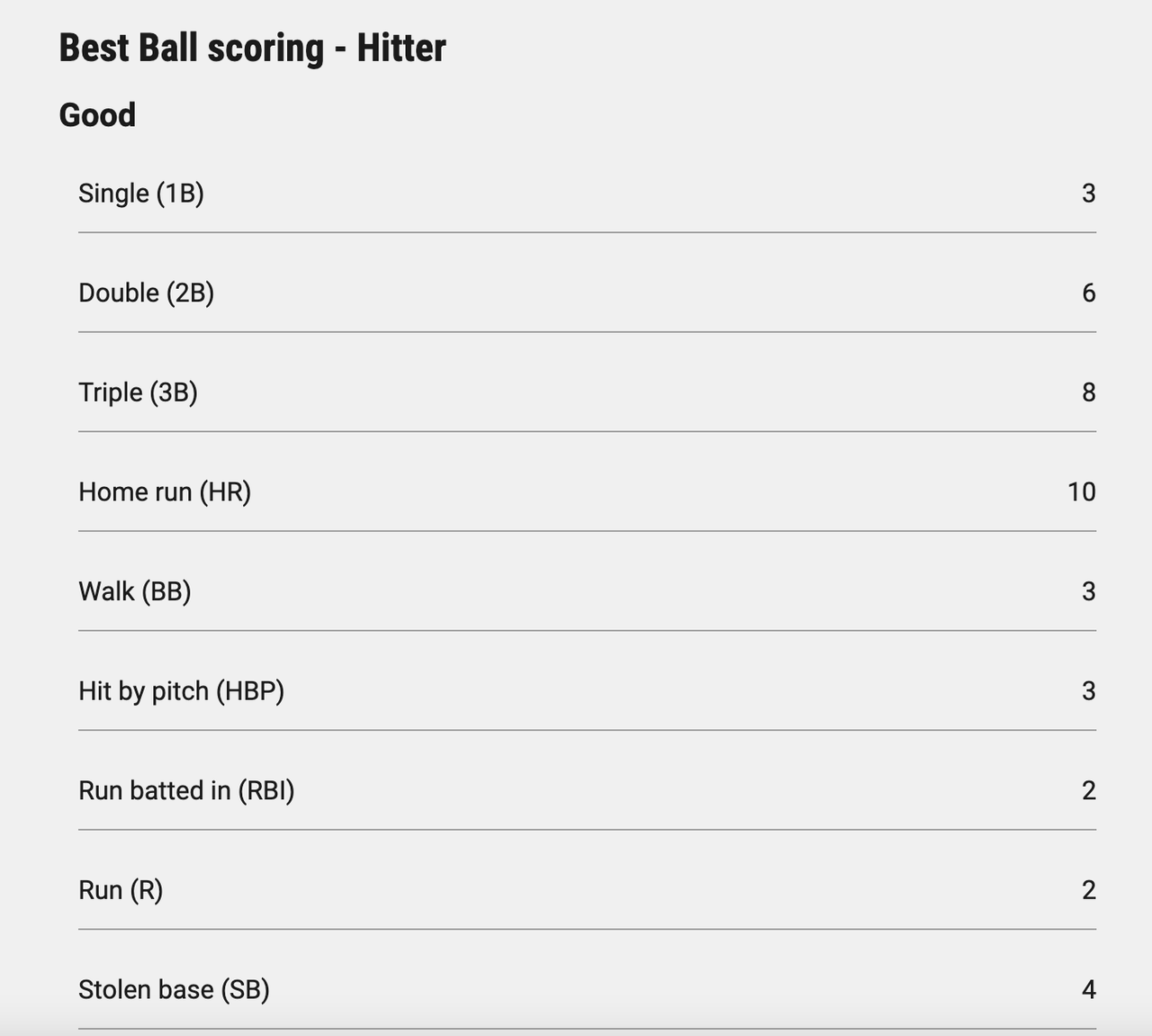
The Roster Construction
Each entrant will draft 20 total players per entry, but the top performing players over each week at the roster positions listed below will be designated as starters and accumulate statistics for that week.
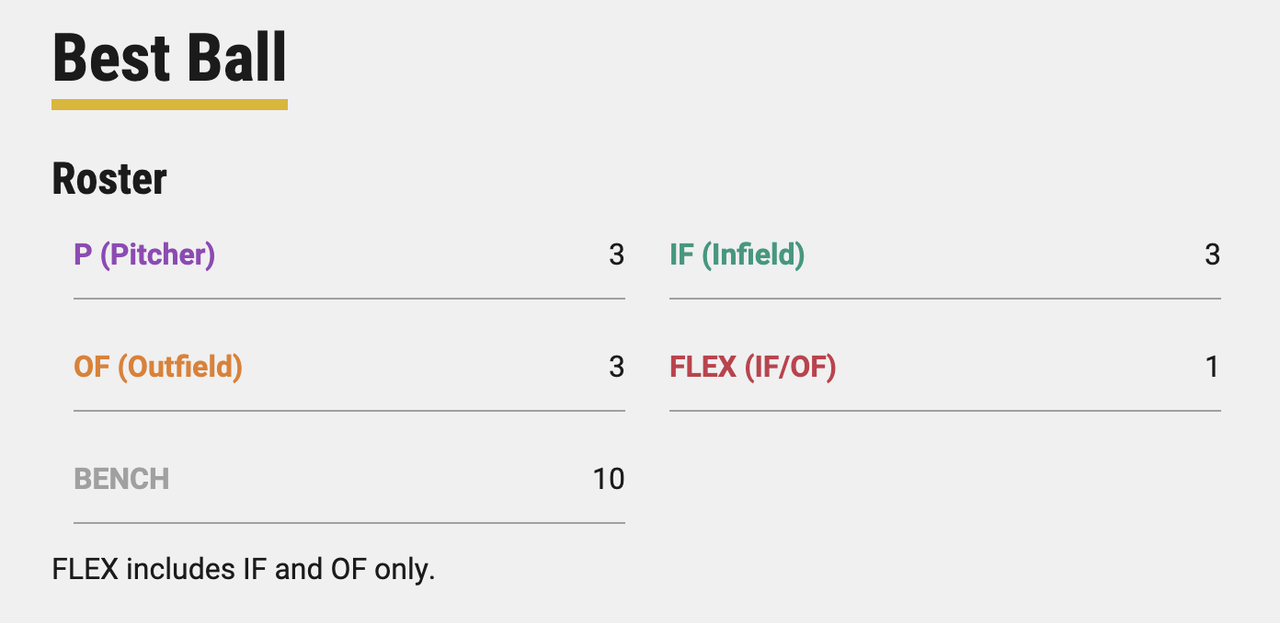
The Strategy
Finally, the part you've been waiting for! We've covered all the details about how the tournament is structured, and now its time put things into action. So, what's the optimal approach?
Obviously, there isn't just one right answer for this. MLB Best Ball is still a new game and the community is still learning (and discovering) the best strategies.
One data set we have is the 2022 Advance Rates, which highlight the percentage of teams who advanced to the playoffs ("Round 2") for each player from last year's $25 contest, "The Dinger." Here's the top 20:
Yeah, Aaron Judge teams performed quite well last year. Having NL MVP Paul Goldschmidt didn't hurt, either.
Two other trends I noticed were A) no aces, and B) plate appearances really matter.
Starting with the pitchers -- Shane McClanahan, Chris Bassitt, and Framber Valdez were mid-round picks in '22, and they allowed managers to target elite bats early in drafts.
Last March I wrote about why the middle tier of starting pitchers was growing entering the season, and employing that strategy did work out.
It's also very important to realize that with best ball rosters, there's no fallback option -- no waiver wire to lean on if an upside pick doesn't work out. In managed leagues we can more easily draft risky, upside bets since that roster spot can be churned if the pick doesn't work out.
For Underdog best ball, reliability is key with pitching. Innings eaters, veteran arms, and starters who pitch deep into games are more important bets, especially in the middle rounds, than high-celing, low-floor picks later on.
The other area to seek an edge in early drafts is targeting playing time. As discussed here, a large portion of the Advance Rate leaders were hitters who compiled a ton of plate appearances. Underdog is a points-based game, after all. This means targeting leadoff hitters, bats in good lineups, and players who aren't at risk of being platooned.
Further strategy discussion on both topics, and more macro-level strategies, will be released leading up to the season!